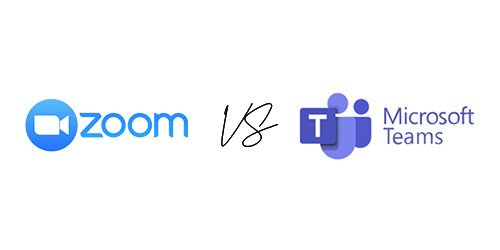
In an era of remote work and digital collaboration, communication tools like Microsoft Teams and Zoom have become indispensable for businesses. Both platforms offer a variety of features that facilitate virtual meetings, team collaboration, and seamless communication. However, when it comes to choosing between the two, decision-makers often find themselves in a conundrum. This article delves into the comparative analysis of Microsoft Teams and Zoom, aiming to shed light on their respective strengths and help you determine which one might be the better choice for your needs.
Microsoft Teams: Integrated Collaboration
Microsoft Teams is a comprehensive collaboration platform that seamlessly integrates with the broader Microsoft 365 suite. It’s more than just a video conferencing tool; Teams offers a wide range of features that foster collaboration, including chat, file sharing, and integration with Microsoft Office applications like Word, Excel, and PowerPoint.
Teams’ integration with Microsoft 365 is its biggest strength. If your organization heavily relies on Microsoft’s suite of applications, Teams can provide a unified and intuitive experience. Teams allows you to co-edit documents in real-time, host video meetings, and maintain project-specific communication, all within one platform.
Moreover, Teams offers robust security measures, including data encryption and multi-factor authentication, aligning with Microsoft’s well-established security framework. Also, its advanced administrative controls allow for extensive customization and control over teams and channels.
Zoom: Streamlined Video Conferencing
Zoom, on the other hand, has established itself as a leading video conferencing solution, known for its simplicity, reliability, and high-quality video and audio. While it doesn’t offer the extensive application integration seen with Teams, Zoom shines in its core offering: video communication.
Zoom’s easy-to-use interface and straightforward functionality make it an excellent choice for organizations that prioritize video communication. With features like virtual backgrounds, touch-up my appearance, breakout rooms, and a hand-raising option, Zoom enhances the video conferencing experience.
Another advantage of Zoom is its scalability. It can support up to 1,000 video participants and 49 videos on screen, making it a preferred choice for hosting large webinars or conferences.
Zoom also offers end-to-end encryption and password-protected meetings, ensuring a secure communication environment. However, it’s worth noting that Zoom has faced criticism in the past over privacy concerns, leading to significant improvements in its security protocols.
Microsoft Teams vs. Zoom: The Verdict
Choosing between Microsoft Teams and Zoom largely depends on your organization’s specific needs. If you’re looking for an all-encompassing collaboration platform that integrates with a suite of productivity applications, Microsoft Teams would likely be the better choice. Its deep integration with Microsoft 365 makes it an ideal choice for organizations already invested in the Microsoft ecosystem.
On the other hand, if your primary need is a reliable, user-friendly, and scalable video conferencing solution, Zoom could be the more suitable option. Its intuitive interface, high-quality video, and audio capabilities, along with unique video-centric features, make it a favorite for businesses prioritizing video communication.
In terms of security, both platforms have made considerable efforts to provide secure communication environments. Microsoft Teams benefits from Microsoft’s robust security framework, while Zoom has made significant strides in improving its security measures in response to past criticisms.
Conclusion
In the end, the choice between Microsoft Teams and Zoom hinges on your organization’s unique needs, existing software infrastructure, and communication priorities. Both platforms offer robust capabilities in their respective areas of strength, so understanding your business’s specific requirements is key to making the right choice. It’s worth leveraging free trials or demos offered by both platforms to evaluate their suitability for your organization before making a decision.



